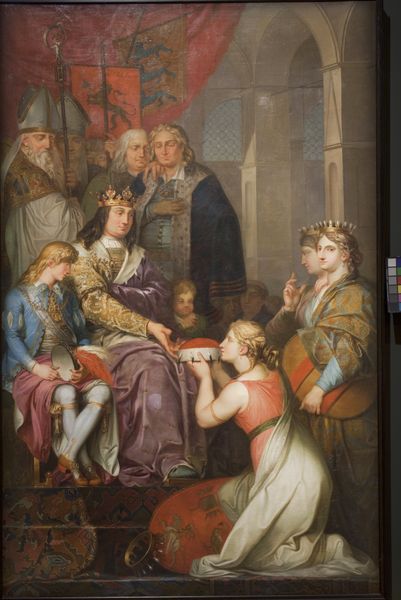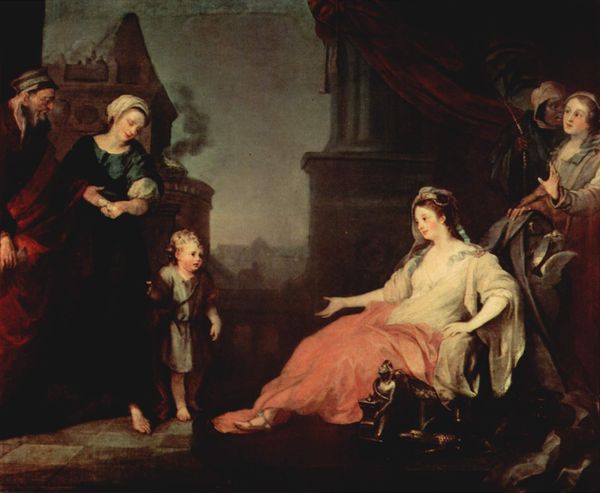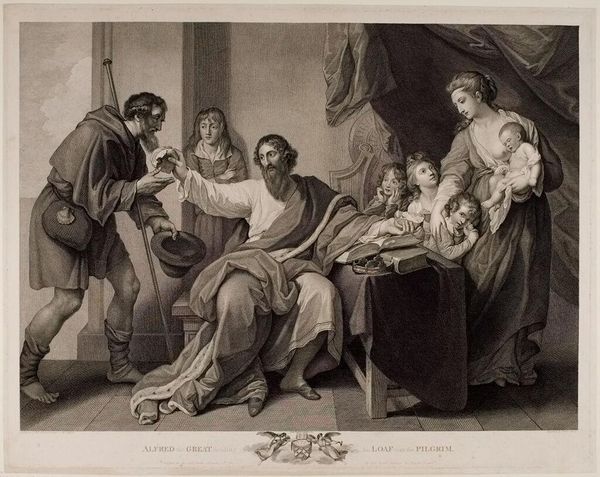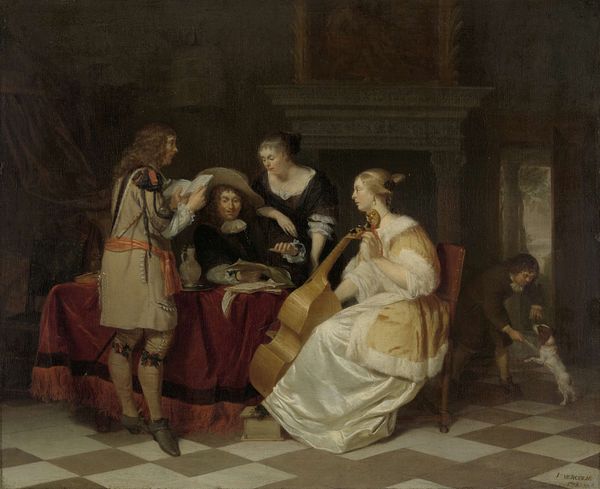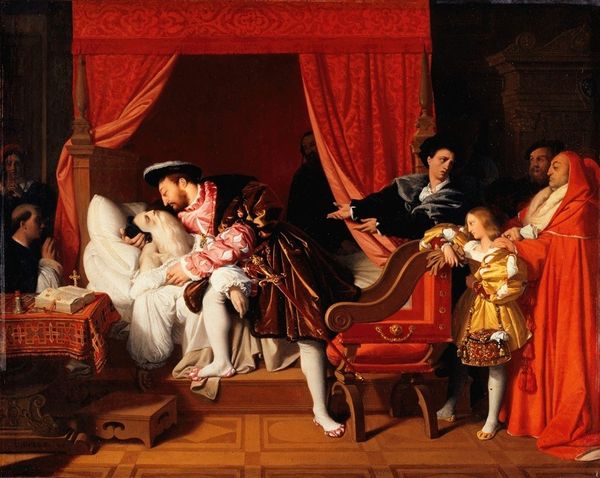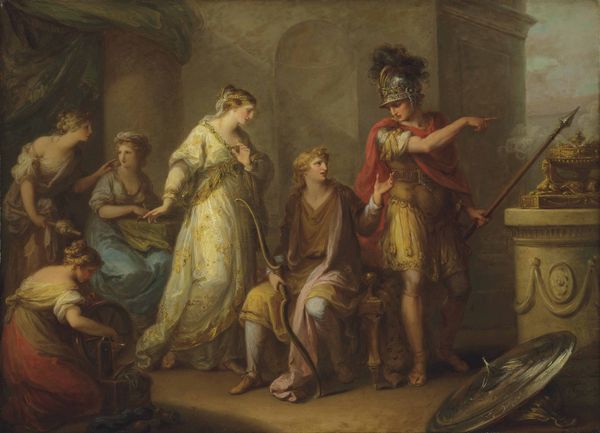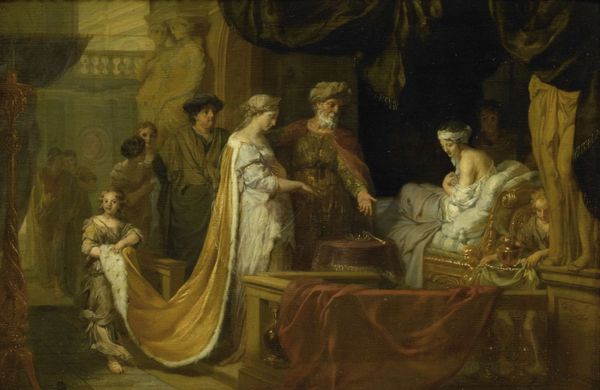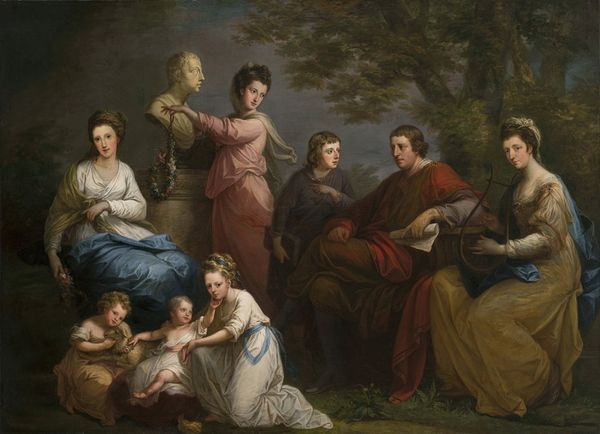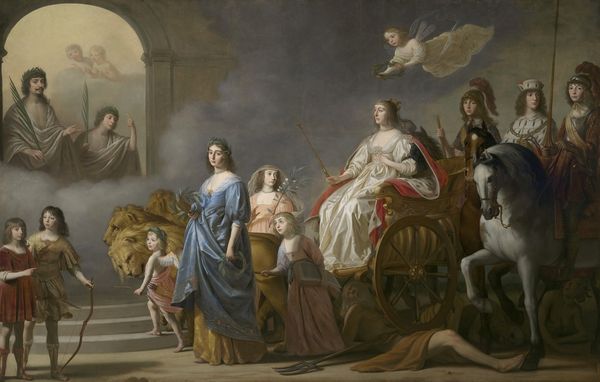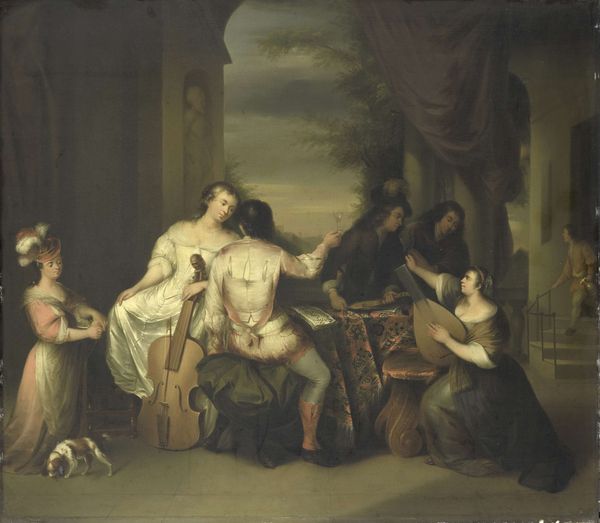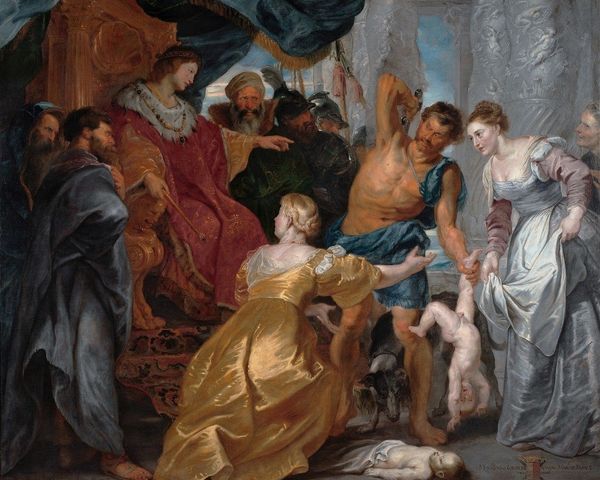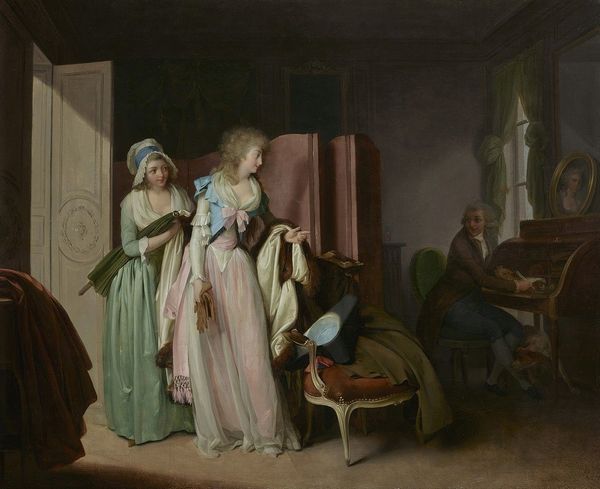
Christian I Raising the Province of Holstein to the State of a Duchy in 1460 1778
0:00
0:00
Dimensions: 60.5 cm (height) x 38 cm (width) (Netto)
Editor: Nicolai Abildgaard’s oil painting, "Christian I Raising the Province of Holstein to the State of a Duchy in 1460," completed in 1778… It has this sort of Rococo-Baroque feel to it, with this grand theatrical staging. It strikes me as almost frozen, like a tableau vivant. So many figures packed in, almost like everyone important in 1460 was invited to this one room. What story do you think Abildgaard is telling? Curator: Well, look closer. Consider the gestures. The kneeling figure offering what looks like her lips, and Christian's outstretched hand almost a moment of hesitation. What does it mean to *raise* a province? Abildgaard is not simply painting a portrait; he’s crafting an allegory about power, loyalty, and perhaps even sacrifice. That light is theatrical, yes, but does it also suggest truth being revealed? How might the artist have wanted this moment to resonate with audiences during a time of enlightenment ideals and revolution? Editor: That pause in Christian's hand is a compelling point. I hadn’t considered it as anything other than a standard regal gesture. And now that you mention it, what's the woman kneeling for? Could she be allegorical as well? Curator: Precisely! Think of the Enlightenment fascination with classical allegory. The kneeling figure embodying Holstein, perhaps? Consider the composition again. Are we witnessing liberation or subjugation? The composition feels decidedly… ambiguous, wouldn't you agree? This almost certainly opens up discussion, makes us question things and consider the implications of this ‘raising’ of Holstein. Abildgaard gives us a historical scene loaded with present-day resonance. Editor: It really does, now that you've pointed it out. It makes this scene more of a reflective historical analysis rather than just an oil painting. Curator: Art reflects not only the world it depicts, but the world of the artist. So next time you encounter something which gives you pause, you should keep on seeking a better perspective!
Comments
statensmuseumforkunst almost 2 years ago
⋮
During 1778-91 Abildgaard created ten large paintings for the Great Hall at Christiansborg Palace. He had hoped to be painting dramatic scenes from ancient Danish legends. But the king’s counsellors wanted depictions of the history of the current royal family, the Oldenburgs, and the paintings were to reflect the position of the reigning king. Thus, the kings were to be presented as fair legislators, administrators, and builders. For example, the painting of Christian I was to be a symbolic image accentuating the close ties between Denmark and the Duchy of Holstein. Only one scene gave Abildgaard the opportunity to paint a dramatic episode: King Christian IV on the ship The Trinity (no. 3, r). He never got to paint scenes from legend. In the palace fire of 1794 only three paintings were saved.
Join the conversation
Join millions of artists and users on Artera today and experience the ultimate creative platform.
